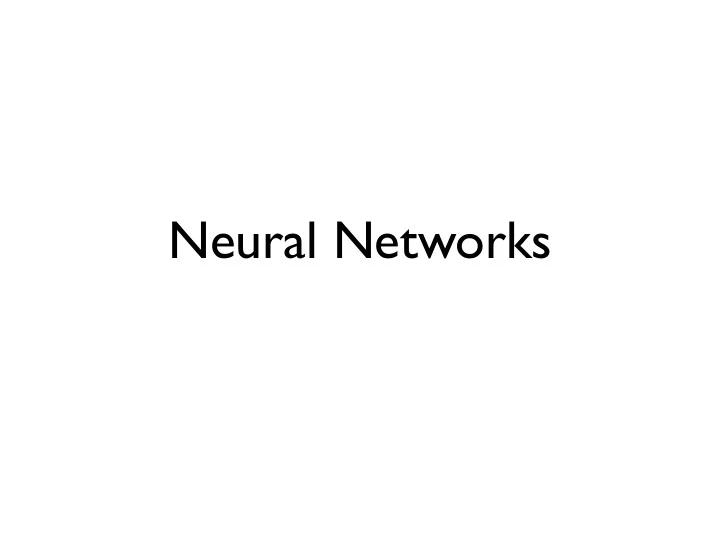

Neural Networks
Module2 : learning with Gradient Descent module 2: numerical optimization LEARNING PERFORMANCE REPRESENTATION DATA PROBLEM EVALUATION RAW DATA CLUSTERING FEATURES housing data train/test error, accuracy spam data Cross Validation SUPERVISED SELECTION ROC LABELS LEARNING ANALYSIS numerical optimization DATA Logistic Regression DIMENSIONS Perceptron PROCESSING TUNING Neural Network • formulate problem by model/parameters • formulate error as mathematical objective • optimize numerically the parameters for the given objective • usually algebraic setup - involves matrices and calculus • probabilistic setup (likelihoods) next module
Module 2 Objectives / Neural Networks • perceptron rules • neural network idea, philosophy, construction • NN weights • Backpropagation : training NN using gradient descent • NN modes, autoencoders • run NN-autoencoder on a simple problem
The perceptron
The perceptron • (like with regression) we are looking for a linear classifier � � • error different than regression: weighted sum over misclassified points set M
Perceptron - geometry • perceptron is a linear (hyperplane) separator • for simplicity, will transform data points with y=-1 (left) to y=1 (right) by reversing the sign
The perceptron • To optimize for perceptron error, use gradient descent � • with update rule � � • batch update: �
perceptron update - intuition • perceptron update: the plane (dotted red) normal w (red arrow) moves in the direction of misclassified p1 until p1 is on the correct side.
Perceptron proof of convergence • if data is indeed linearly separable, the perceptron will find the separator line.
Multilayer perceptrons
Checkpoint : XOR perceptron • build/explain a 3-layer perceptron that give the same classification as the logical XOR function � � � � • your answer is required! Submit via dropbox.
Neural Networks • NN is a stack of connected perceptrons � • bottom up: - input layer - hidden layer - output layer � • multilayer NN very very powerful in that they can approximate almost any function - with enough training data
Neural Networks • Each unit performs first a linear combination of inputs � � • Then applies a nonlinear (ex. logistic) function “f” before outputting a value � • Three layer NN output can be expressed mathematically as �
Training the NN weights ( w ) • one datapoint � � � • set of weights up (close to output): � � � � • we obtain the hidden-output weight update rule
Training the NN weights ( w ) • weight first set of weights (close to input)
NN training
Autoencoders • network is “rotated” - from left to right: input-hidden-ouput • input and output are the same values - hidden layer encodes the input and decodes back to itself
BackPropagation ( Tom Mitchell book )
Recommend
More recommend